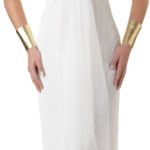
Exactly What Is A BULLFIGHT (CORRIDA DE TOROS) ?
The Corrida de Toros (the big event known as ‘bullfight’ by British loudspeakers) is a vital tradition which has evolved over centuries and it is deeply baked into Spanish culture. As the name ‘bullfight’ implies to a lot of visitors the event is really a sport, this isn’t the situation. A bullfight is recognized as a creative performance – a distinctive theatrical spectacle just like a play, a ballet or perhaps an opera. Coverage from the corrida seems within the culture portion of the national press, and not the sports pages from the local papers. It is really an important distinction – many people from other countries viewing their first corrida anticipate seeing what they’ve been conditioned to anticipate from watching sports: ‘a fair fight’. In fact the bull never ‘wins’. It’s not meant to. The whole spectacle is really a theatrical tragedy in which a man uses his superior wits to mould an infinitely more effective animal to his will, and by doing this creates an emotionally moving, artistic performance.
Each afternoon’s performance typically features 6 bulls and three matadors who perform in rotation. The performance with every bull happens in three ‘tercios’ or functions. If you’re not acquainted with the Corrida de Toros, the next summarizes what goes on to decide if you wish to see one when you’re visiting Pamplona throughout the San Fermín Festival.
The mid-day starts with the ‘paseillo’ or ‘little walk’ when all of the participants within the day’s bullfight parade in to the arena. In this phase, the Alguacilillos arrive on horseback, promote themselves towards the president’s box & ask symbolically for secrets of open the Puerta de Toriles. The bulls are behind that gate. When the gate is opened up and also the first bull enters the bullring, the spectacle has began.
Within the first tercio (known as the Suerte de Varas), each one of the matadors pass the bull, charging at full strength, using the capote, a sizable pink and yellow cape. The matador who’ll face this bull is going to be watching carefully to try and identify the dominant characteristics from the bull (i.e. will they favour one horn or another?) Soon two picadores go into the ring on horses, armoured for defense in the bull and transporting a clear, crisp lance (the ‘vara’). The bull demonstrates its strength and ferocity if this charges the horse. At this time, the picador attempts to have to wait the bull’s charge by putting the vara in to the large muscle behind the bull’s shoulders. It has the result of decreasing the bull’s mind, allowing the following stage within the corrida.
The second tercio is known as la Suerte de Banderillas. Here the banderilleros cite the bull while running within an arc over the sand. At the stage where they intersect, thebanderillero leaps within the bulls horns and places two flags (the banderillas.) In this stage, the matador observes important characteristics like how good the bull sees. A properly-placed banderilla will also help to fix deficiencies like a inclination to hook with one horn.
Over the past tercio, la Suerte Suprema, the bullfighter utilizes a muleta, a smaller sized red cape. Then he needs to show his mastery within the faena by dominating the bull and creating a creative symbiosis between animal and man. The bullfight ends using the moment of truth, in which the bull dies through the sword from the matador. When the performance continues to be exceptional, everyone else may petition obama from the plaza to award a number of the bull’s ears towards the matador like a trophy.
Resourse: http://pamplonaman.com/booking/bullfights/







